|
|
The Arts Society
Woking, Talks Programme 2021
|
|
All Speakers are carefully chosen based
on their reputation for attractive and
well-presented talks with good pictures. |
|
Our talks are held on the second Tuesday
of the month except July and August
(when many members are on vacation). |
|
They start promptly at 10.30 am but
doors open 9.45 am for tea and coffee |
|
From October 2021, they will be at
our new venue, Normandy Village Hall. |
|
Address: Manor Fruit Farm, Glaziers
Lane, Normandy, Guildford Surrey GU3 2DT |
|
Members may bring a visitor, but
the same person may not be a guest more
than twice a year. While we do not
charge a Visitors fee, Visitors may want
to make a donation to the Society of
(say) £5. |
|
|
|
See our current year programme below or click here to view our talks for 2022 |
|
|
|
|
|
January
13th 2021 |
Talk: Coloured Sculpture:
What’s All the Fuss About?
|
Throughout most of the nineteenth century, it was considered almost a crime for Sculptors to apply colour to a statue. Such practices, it was thought, defied the dominant aesthetic of neoclassical statuary — the pure, undifferentiated, classical white marble body inherited from ancient Greece. Gradually, through the centuries, the conservative stranglehold loosened and various forms of coloured sculpture began to catch on. Coming to the present day, Tom Flynn has written books about Sean Henry's coloured statues.
Sean (whose Mother, Rosalind Henry, was a Member of The Arts Society Woking) has won a broad international reputation as one of the most talented British artists of his generation. This talk investigates the fascinating controversy about the use of colour in statues over time and asks what all the fuss was about. |
|
|
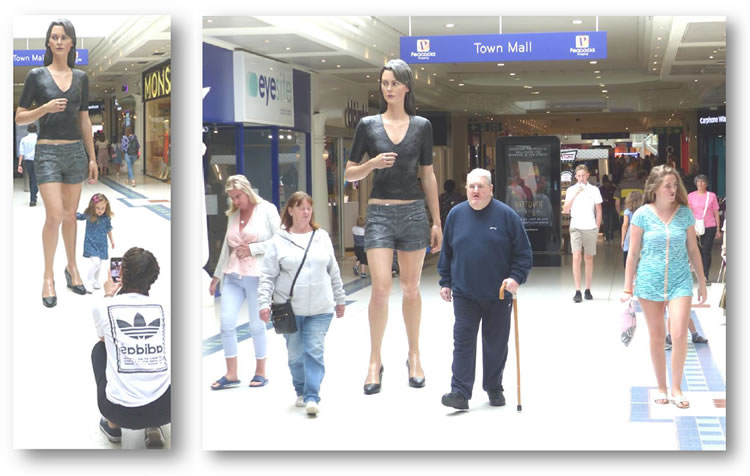 |
|
|
|
Speaker: Tom Flynn |
|
Tom is a UK-based art historian,
writer and art consultant. He
holds a BA Honours degree (First
Class) in Art History from the
University of Sussex, a Masters
in Design History from the Royal
College of Art and a doctorate
from the University of Sussex.
His interests include
contemporary art, sculpture
history, museology and the
history of museums, art crime,
issues in cultural heritage and
the historical development and
professional practice of the
European art markets. |
|
|
|
|
February
10th
2021 |
Talk: Pleasure, Sin and
Men with Fish Heads: The
fantastical works of Hieronymus
Bosch
|
Was Bosch hallucinating from too much ergot-infected wheat when he created his works over 500 years ago?
Monsters and morals, pleasure and sin, heaven, and hell; the strange works of Hieronymus Bosch are considered an anomaly in the history of art. They are filled with grotesque images of fantastical creatures surrendering to lust, desire, fantasy, and angst.
His most famous work, the triptych ‘The Garden of Earthly Delights’, illustrates the danger of giving in to temptation. It includes a highly inventive hell scene that is still regularly censored today!
This talk looks at arguably the most enigmatic figure in art history, and the fantastical and strange works he created
|
|
|
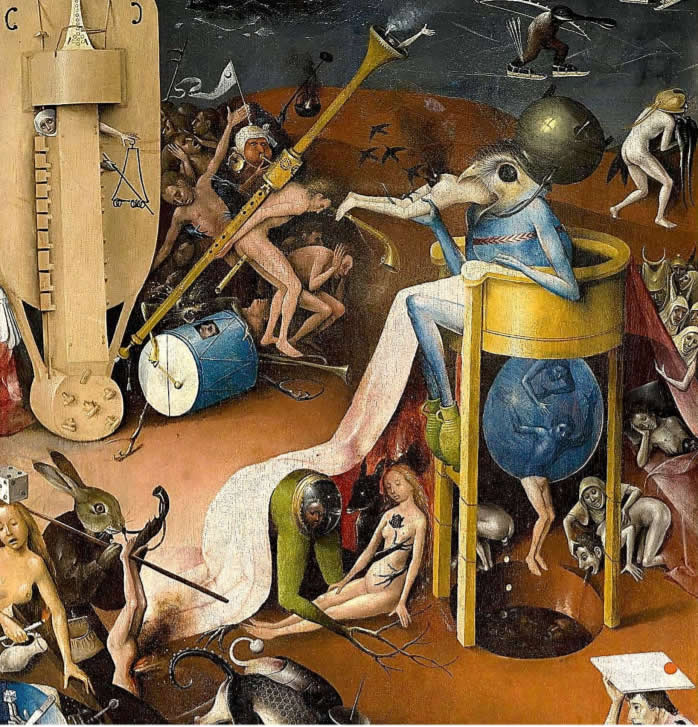 |
THE GARDEN OF EARTHLY DELIGHTS
By
Hieronymus Bosch |
|
Speaker: Stella Lyons |
‘Without sacrificing scholarship, Stella Lyons has a most engaging way of hooking an audience into sharing her passionate interest in art history, drawing three dimensional human stories and experiences from the two-dimensional canvas’ – Maeve Kennedy, writer and Arts correspondent for The Guardian
Stella Grace Lyons is a freelance Art History speaker, speaker and writer accredited with The Arts Society who has talkd worldwide. |
|
| |
|
|
March
10th 2021 |
Talk: Restoration
Theatre - Rakes, Fops and
Wenches
|
|
The return of Charles II led to
the re-opening of theatres after
the 18 year closure of public
playhouses under the
Commonwealth Government. The new
theatres saw the first actress
on the stage replacing the
cross-dressing males. Great
actors and lively audiences in
Restoration Theatre brought the
morals of the court onto the
stage in its comedies of city
life and an era of great
playwriting was unleashed. |
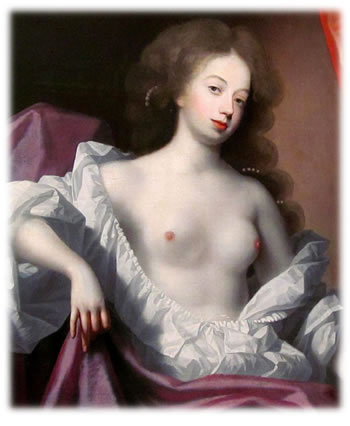 |
 |
NELL GWYNNE
1650-1687 |
KING CHARLES 11
1630-1685 |
|
|
|
Speaker: Malcolm Jones |
Malcolm studied at University of
London, King’s College London
and RADA. He has worked as an
actor, director and teacher and
backstage at the Royal Opera
House. He was Workshop and
Events Manager at the V&A
Theatre Museum in London for 10
years. Since 2009 he has
talkd on the V&A Short Course
and Year Course Programme on
Theatre and has also worked on
the Art and Expression
Programme. He has taught at Rose
Bruford College, Mountview
Theatre School, The Actors
Centre and RADA.
He has written material for The
National Theatre Education
Department and contributed as a
speaker on theatre to many
television programmes while
working at the Theatre Museum.
He talks for Road Scholar
USA, for Theatre groups visiting
London and he has talkd in
America. |
|
|
|
|
|
|
|
April
14th 2021 |
Talk: Vincent van Gogh – Madman or Genius?
|
|
There has never been fascination in an artist to rival the Dutchman who simply signed his work 'Vincent'. We
are all aware of the recent exhibitions and the remarkable prices realised for this humble artist's work. Most of
us appreciate the beauty of his efforts but how much do we know about the man himself? This talk
considers exactly why, despite never selling a painting and his committing suicide in poverty, no art historian
today denies his genius. There are extraordinary, little known facts to be revealed, while enjoying the
remarkable range of his talent. Though seeming so extreme and exceptional, the tragic story of his loveless life
is deeply moving, and his humanity makes a lasting impression. |
|
|
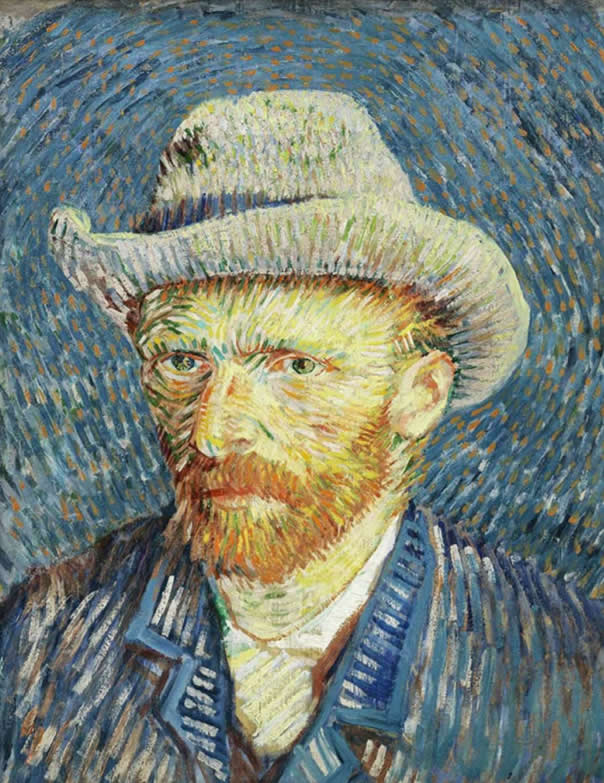 |
|
SELF PORTRAIT BY VINCENT VAN
GOGH |
|
|
|
Speaker: Anthony Russell
|
|
Anthony has travelled the world, combining painting with tour lecturing - principally to American
university students on bespoke tours. Now based in London, he spends much of his time lecturing and
undertaking research, while assisting at the British Museum with outreach events and visiting
speakers.
As an advocate of non-violence, he is the author of the book Evolving the Spirit - From Democracy to
Peace, commended by Aung San Suu Kyi, the Nobel Peace Laureate, as meaning a great deal to her. |
|
|
|
|
|
May
12th 2021 |
Talk: Medieval Castles: An Alternative view.
|
|
This talk offers a
little-regarded alternative
viewpoint of life in English
medieval castles: that of the
ordinary folk. Using
archaeological evidence gleaned
from historic building survey,
contemporary literature,
artistic representations,
graffiti, and architectural
history this talk presents the
story of the masons, carpenters,
cooks, clerks, servants,
stable-hands, and lower status
visitors to great castles.
Instead of studying towers,
gatehouses, and great halls here
we delve into the kitchens,
stables, staircases, cellars,
and garderobes to uncover
evidence of the non-elite
response to elite buildings. |
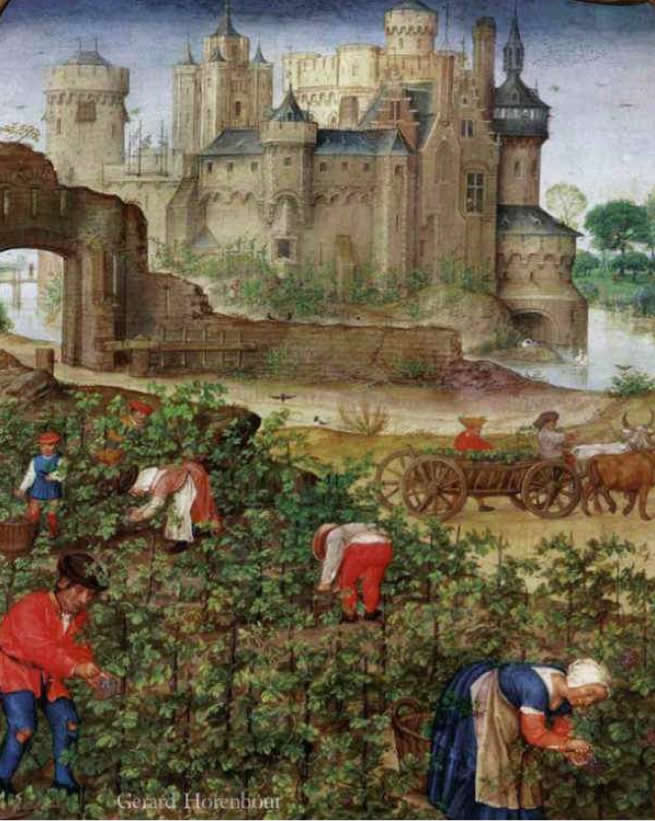 |
|
Painted by Gerard Horenbout
(1465 – 1541) |
|
|
|
Speaker: James Wright |
James is a buildings
archaeologist from Triskele
Heritage, based in Nottingham.
With over twenty years of
professional experience, he has
published several books and
articles concentrating on
mediaeval and early modern
architecture. James is
interested in how we can use the
evidence of physical structures
to understand the realities of
the everyday existence of
ordinary people living in elite
buildings
He has spoken to a wide variety
of organisations including
Historic Royal Palaces, the
National Trust, Gresham College,
Shakespeare400 and the Museum of
London. Lecturing is his
favourite part of his job as he
passionately believes that there
is simply no point in carrying
out research unless you actually
tell folk what you have been
doing! . |
|
|
|
|
|
June
9th 2021 |
Talk: The Subtle Science
and Exact Art of Colour in
English Garden Design – why
gardening can rank as a fine
art.
|
|
|
In 1888 Gertrude Jekyll wrote a
short but seminal article in
The Garden in which she
urged the readers to “remember
that in a garden we are painting
a picture”. As an accomplished
watercolour artist, Miss Jekyll
was familiar with the principles
of using colours, but she felt
that in gardens these principles
“had been greatly neglected”.
This talk looks at how to apply
these principles in designing a
border, but it also looks at the
ways in which a border is
different from a painting.
However, it goes further than
this and looks at how
contemporary work of the likes
of Turner, Monet, Rothko,
Jackson Pollack, and Hockney
evolved in parallel with ideas
about what a garden or border
should look like. |
|
|
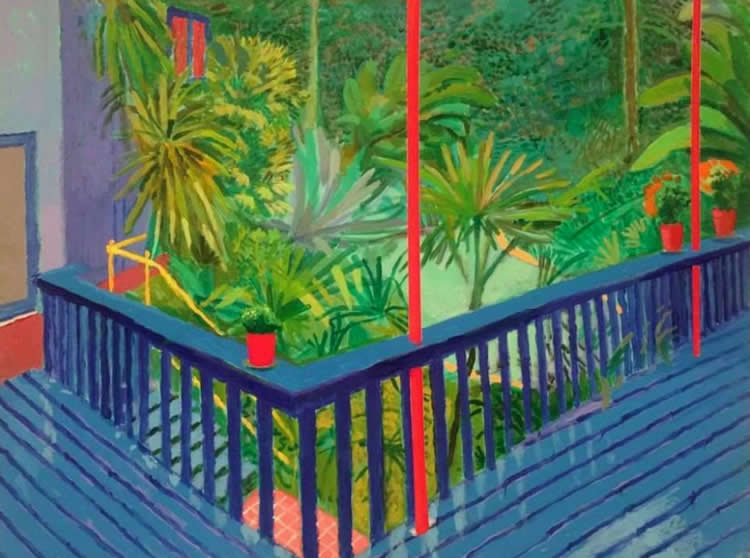 |
|
“GARDEN” by David Hockney |
|
|
|
Speaker: Timothy Walker |
|
Since 1986 Timothy has given 1,500
public talks as part of his work as
Director of the Oxford University
Botanic Garden from 1988 to 2014.
Botanic gardens are often described as
living museums, and garden curators
talk about them in the same way as
museum curators talk about their
collections. Since 2014 he has been a
college speaker and tutor at Somerville
College Oxford. Gardens are often
thought of a place where science and art
meet on equal terms and his talks
investigate this relationship. |
|
|
|
|
July
2021 |
No Talk (Summer
break)
|
|
|
August 2021 |
No Talk (Summer
break)
|
|
|
|
Tuesday
September 7th 2021 - This
Talk will be on Zoom only |
Talk: Albrecht Dürer’s
visit to the Netherlands in
1520/1521
|
Albrecht Dürer’s pension was
suspended after the death of the
Holy Roman Emperor, Maximilian,
and so he made the journey in
July 1520 from Nuremberg to the
Netherlands to seek the
patronage and re-instatement of
his pension from the new Emperor
Charles V. This took him a year
to achieve and a lot happened in
that time. He moved in court
circles where he and his work
were much admired.
Dürer continued working on his
woodcuts. He transformed
woodblock printing through the
use of fine, graceful lines,
intricate details, and subtle
graduations which made him
famous throughout Europe. He
also continued painting
creating, in particular, some
brilliant portraits two of which
are illustrated here.
In his quest to discover the
truth in all things he became a
supporter of Martin Luther and
when his doctrines were making
him enemies he wrote a letter
asking that “Luther should be
protected for the sake of
Christian truth as this is of
more importance to us than all
the power and riches of the
world because all things pass
away with time, truth alone
endures forever.” |
|
|
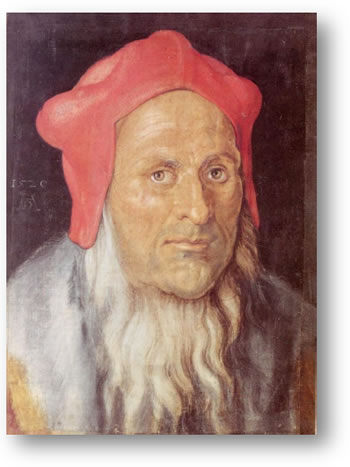 |
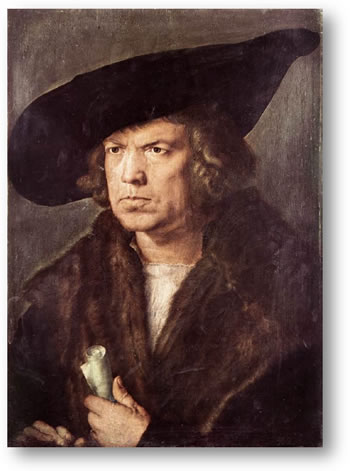 |
|
1520 Distemper on canvas.
“Portrait of a man” |
|
1521 Oil on oak. “Portrait of a
man with beret and scroll” |
|
|
|
|
Speaker: Clare Ford-Wille |
|
|
Clare has an Honours degree in
History of Art, Birkbeck
College, University of London
and her regular commitments
include the Centre for Lifelong
Learning, London University,
National Gallery, V&A Museum,
WEA, Morley College, the City
Literary Institute, the Art Fund
and National Trust. Study tours
abroad. |
|
|
|
|
|
|
Tuesday October
12th
2021 - The first
meeting at Normandy Hall |
Talk: Banksy – Fraud or
Genius
|
|
The talk will trace the story
of Banksy’s humble beginnings as
a tagger on the streets of
Bristol in the 1980’s to one of
the most recognisable names in
the art world. We will examine
the reasons behind his
incredible rise, looking at some
of his famous stunts and discuss
what his influence has been on
the art market today and look at
what his legacy, if any, might
be. |
|
|
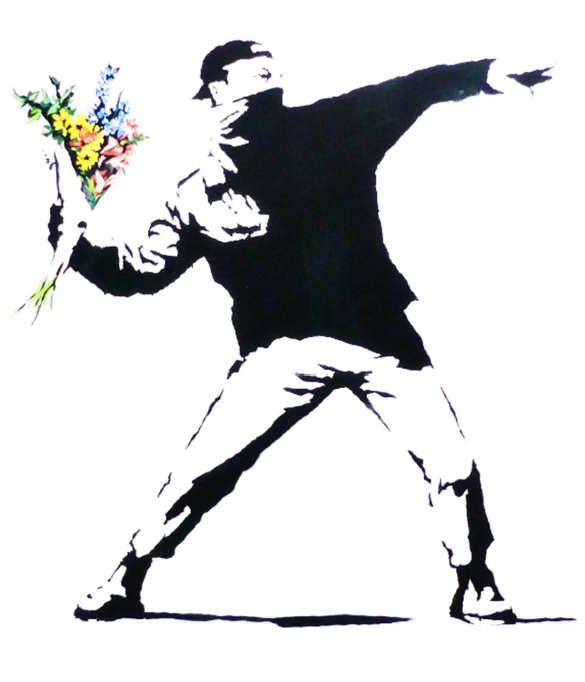 |
|
Banksy graffiti in Palestine |
|
|
|
Speaker: Pepe Martinez |
Pepe qualified as a London blue badge
tourist guide in 2011, graduating at the
top of his class. Since qualifying as a
guide he has specialised in the graffiti
and street
art of East London. Before becoming
a London blue badge he was a tour
manager for 15 years, travelling
extensively, all over the world.
Pepe can organise and arrange talk
facilities in central London. He can
also combine a talk with a walk about
street
art and graffiti in the East End and
can also organise a practical spray
session, giving your group an
opportunity to have a go at creating
their own works. |
|
|
|
|
|
Tuesday November
9th 2021 - at Normandy Hall |
Talk: A brief history of
wine
|
|
Wine has been part of our global
society for over 7,000 years,
and the talk tells of its
origin and appearance in all
societies across the
Mediterranean and through
Europe. There is rich evidence
of the role wine has played in
these societies and how it
became an important component of
faith, well-being, and
festivity. From the kwevris of
Georgia in 5,000 B.C., the
symposia in ancient Greece, the
thermopolia of Pompeii, the
hospices of Europe, to the
dining tables of fine society
wine has been ever present.
Drawings, paintings, engravings,
buildings, pottery, and wine
labels themselves all contribute
to the story. |
|
|
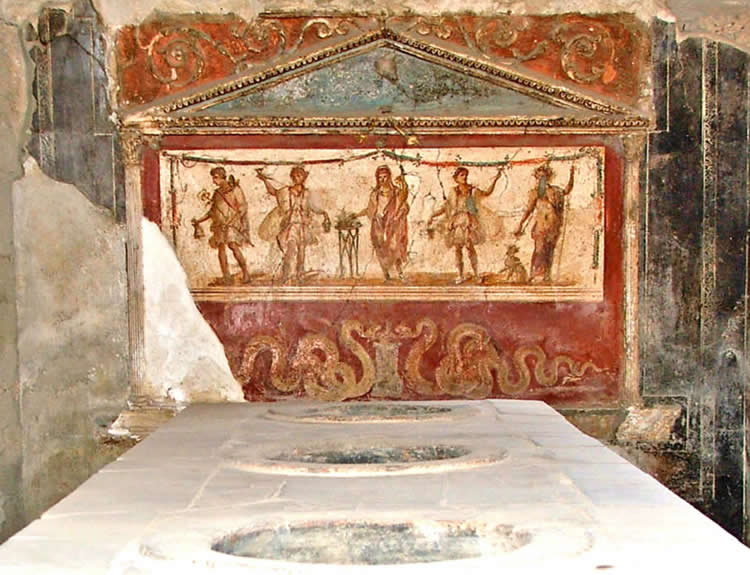 |
Discovered recently, this
thermopolia was a fast-food
stand meant for the lower-class
Pompeiians
who didn't have cooking tools or
amenities of their own to eat,
drink, and socialize. |
|
|
|
Speaker: David Wright |
|
David has been a wine retailer,
importer, and distributor for 30
years. In that time, he has
publicly presented tastings and
talks on wine to trade and
private audiences. These have
taken the form of wine
‘tastings’ or charity events
where a particular subject is
presented, and wines tasted. He
has developed a talk, A
Brief Story of Wine, a
great subject, and full of rich
evidence, going back 7,000
years, in the form of paintings,
decorated drinking vessels,
buildings and literature that
contribute to the story. |
|
|
|
|
|
|
Talk: Joseph of Nazareth: Best
Supporting Actor
|
|
The figure of Mary’s husband Joseph is
familiar from Christmas cards, carols,
cribs, and nativity plays, yet in the
Bible he never speaks a word. It took
many centuries for the quiet carpenter
to emerge from humble obscurity and for
artists to make his image visible. This
talk explores the many legends and
faces of Joseph through the ages, from
wizened old man to powerful guardian.
Come and discover the hidden depths in
that simple bearded figure on your
Christmas cards; but please remember
that although this talk may be
particularly appropriate for December
meetings, Joseph is for life, not just
for Christmas. |
|
|
 |
Joseph & Mary travelling to Bethlehem |
|
|
|
Speaker: Amina Wright |
|
Amina Wright is a curator of historic
art collections and exhibitions. She has
produced several major exhibitions on
eighteenth-century British Art and Old
Masters and published and talkd
widely in these areas. At the Holburne
Museum in Bath she was a key member of
the team that delivered the museum’s
successful redevelopment and has also
worked as a collections and interiors
curator for English Heritage and for the
National Trust, among others. Amina has
recently been awarded an MA in
Christianity & the Arts at King's
College London and is now Senior Curator
for the Faith Museum in Bishop Auckland,
County Durham. |
|
|
|
|
Prior Year's Talks |
|
To see the activities in
previous years, click on the
year;
2024
/
2023
/
2022
/
2021
/
2020
/
2019 /
2018 /
2017 /
2016 /
2015 /
2014 /
2013 /
2012 /
2011 /
2010 |
|
|
|
Disclaimer |
|
The Arts Society Woking cannot be held responsible for any personal accident, loss, damage or theft of members' personal property. Members are covered against proven liability of third parties. |
|
| |
|
| |
|